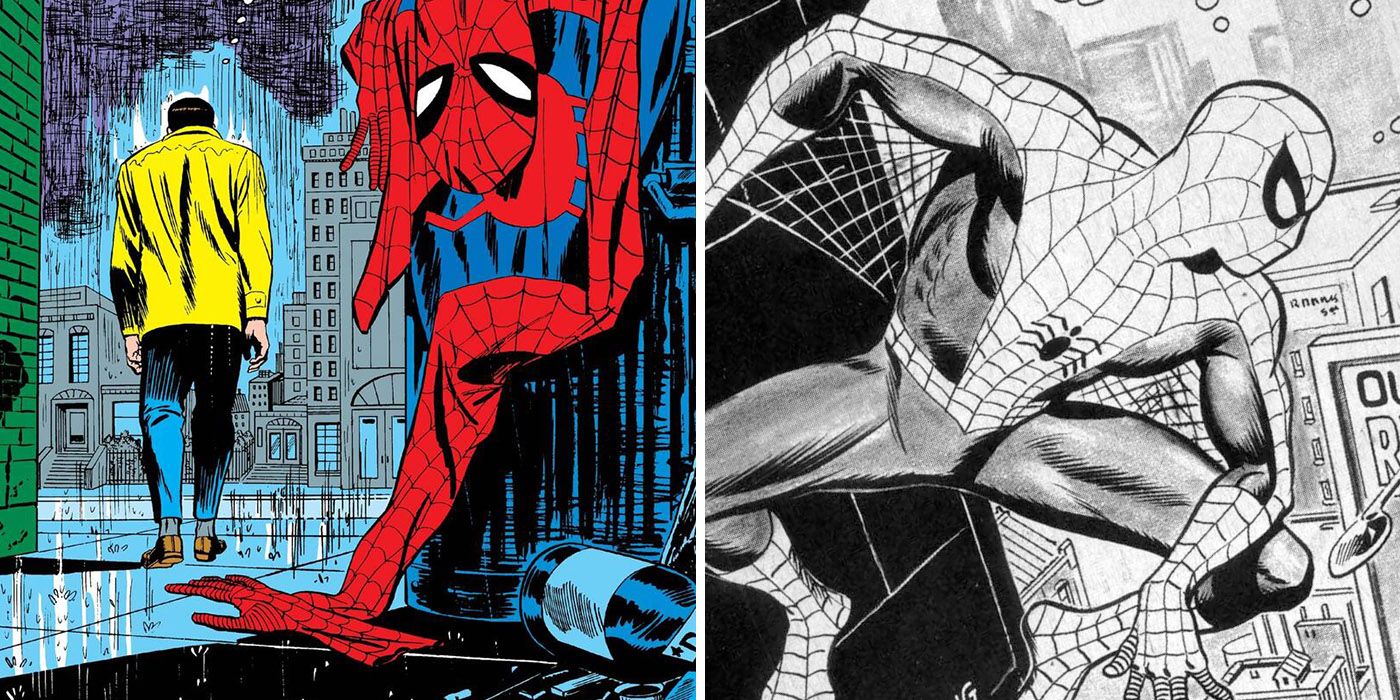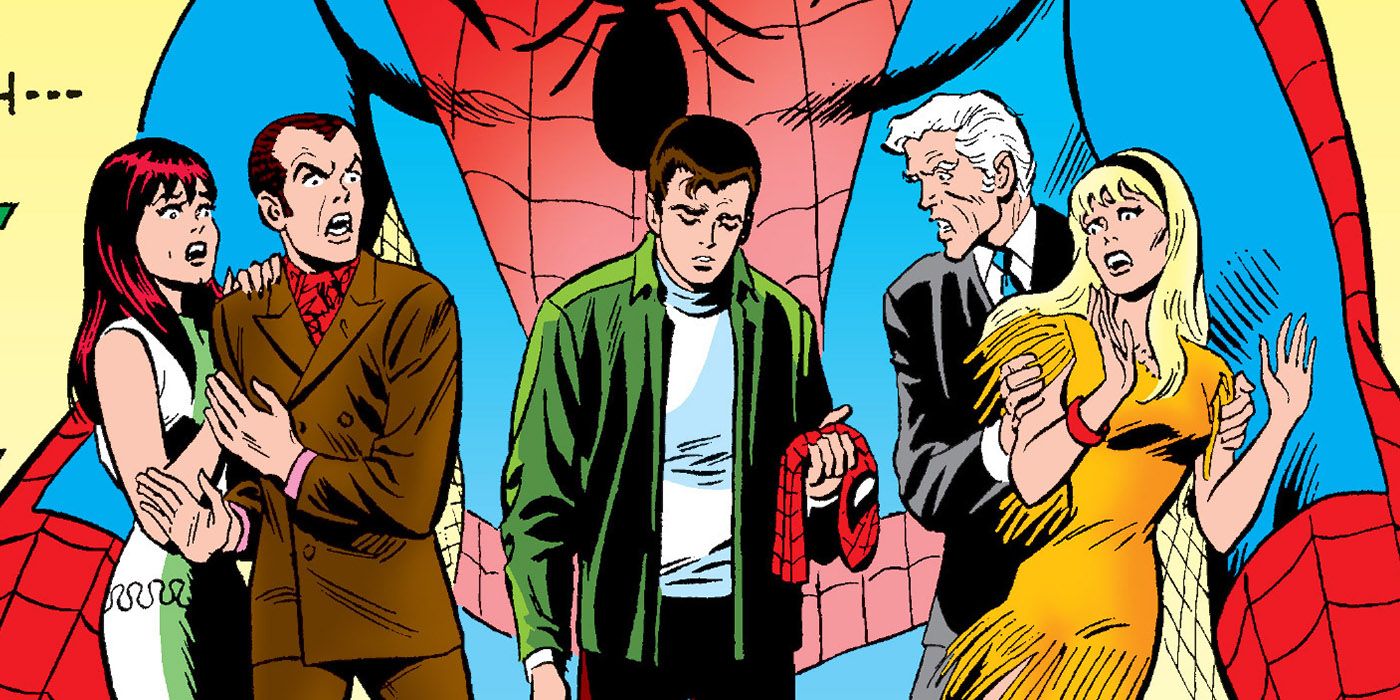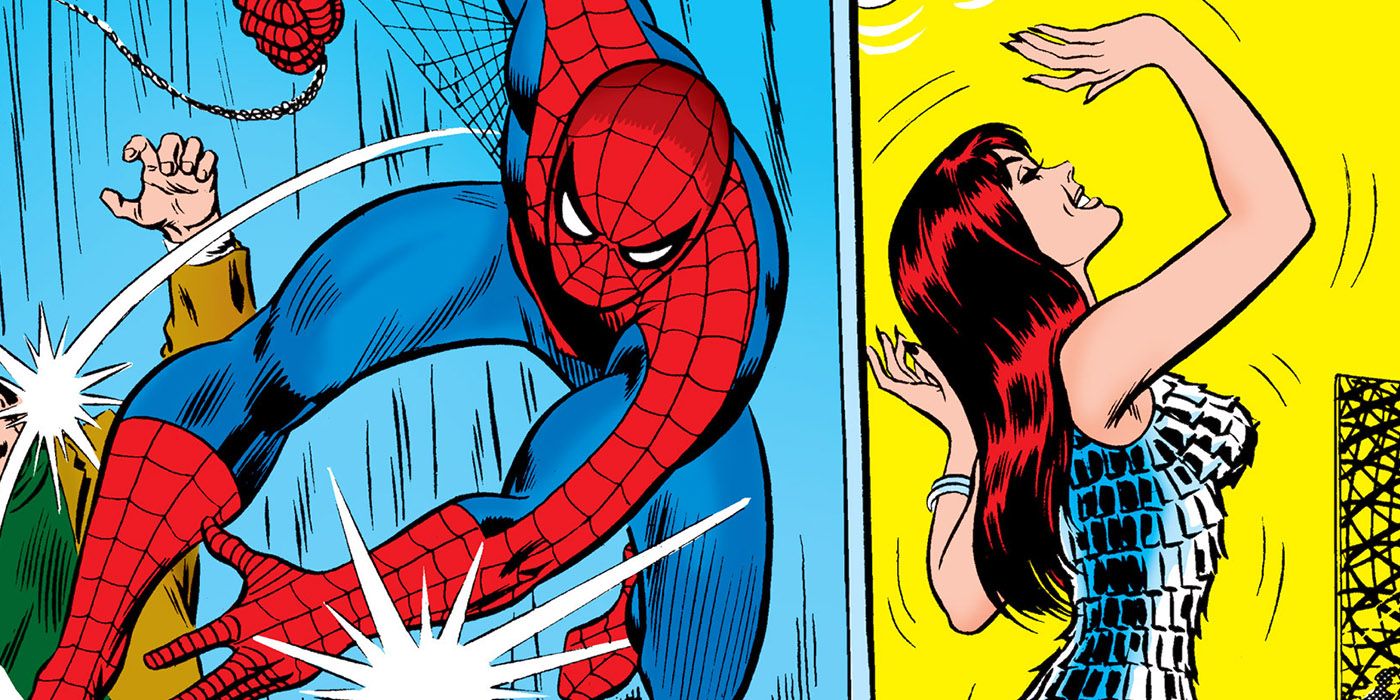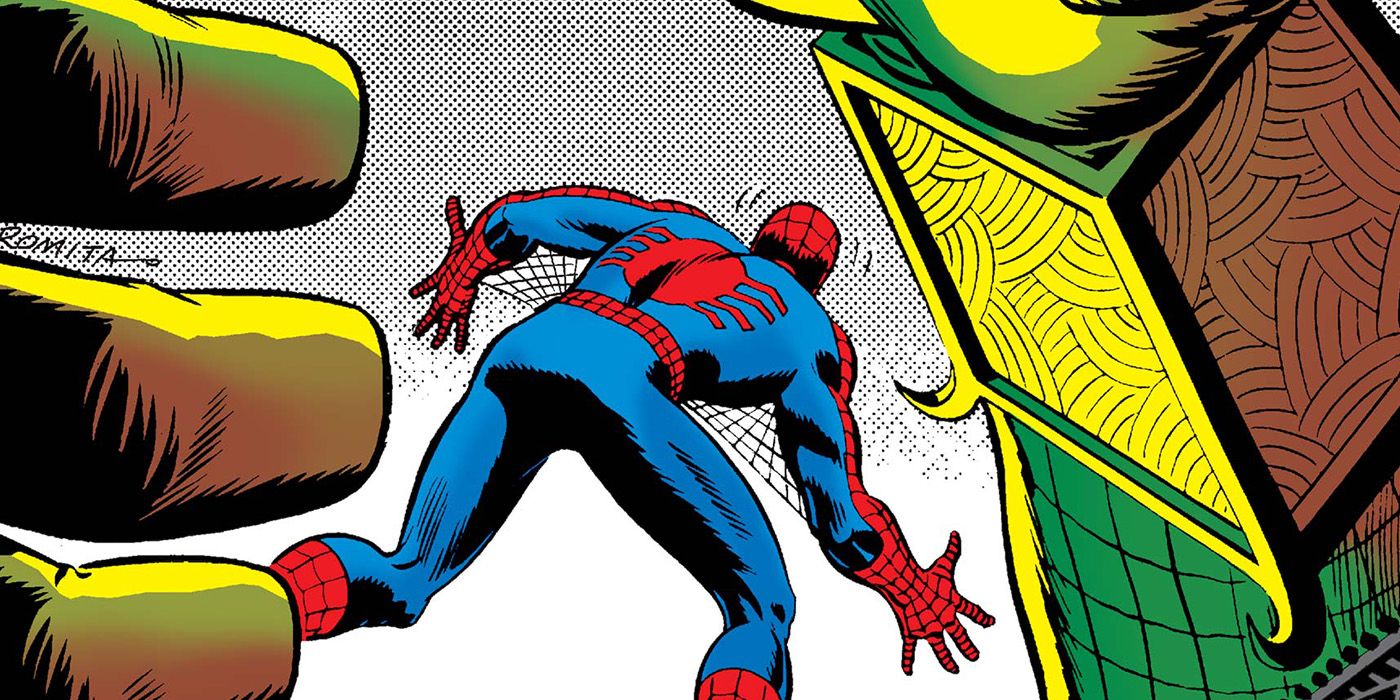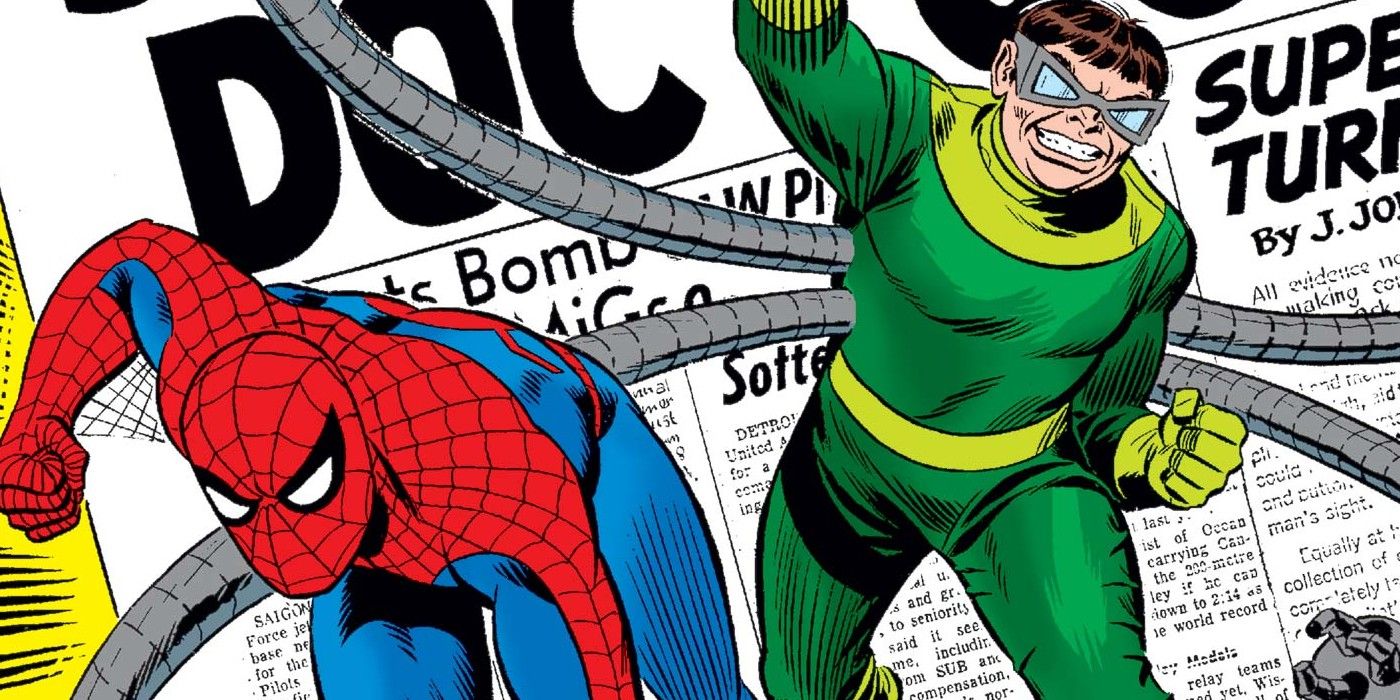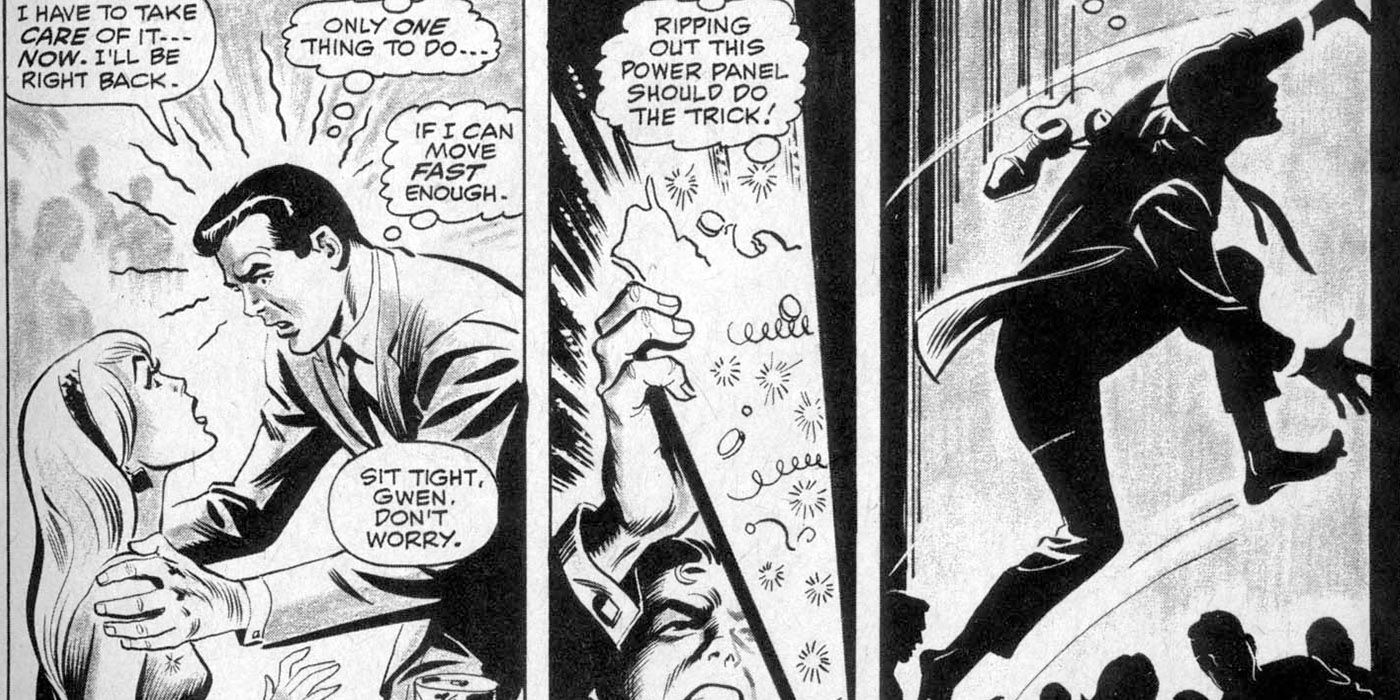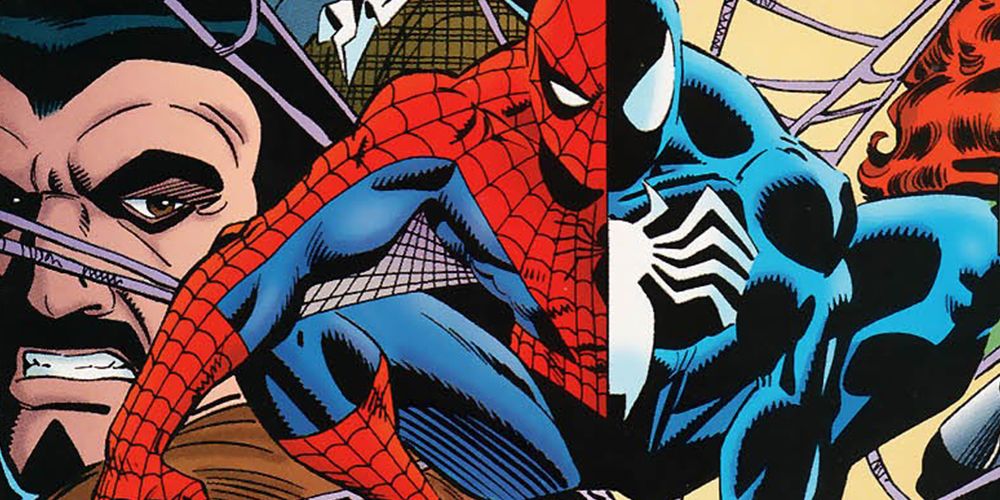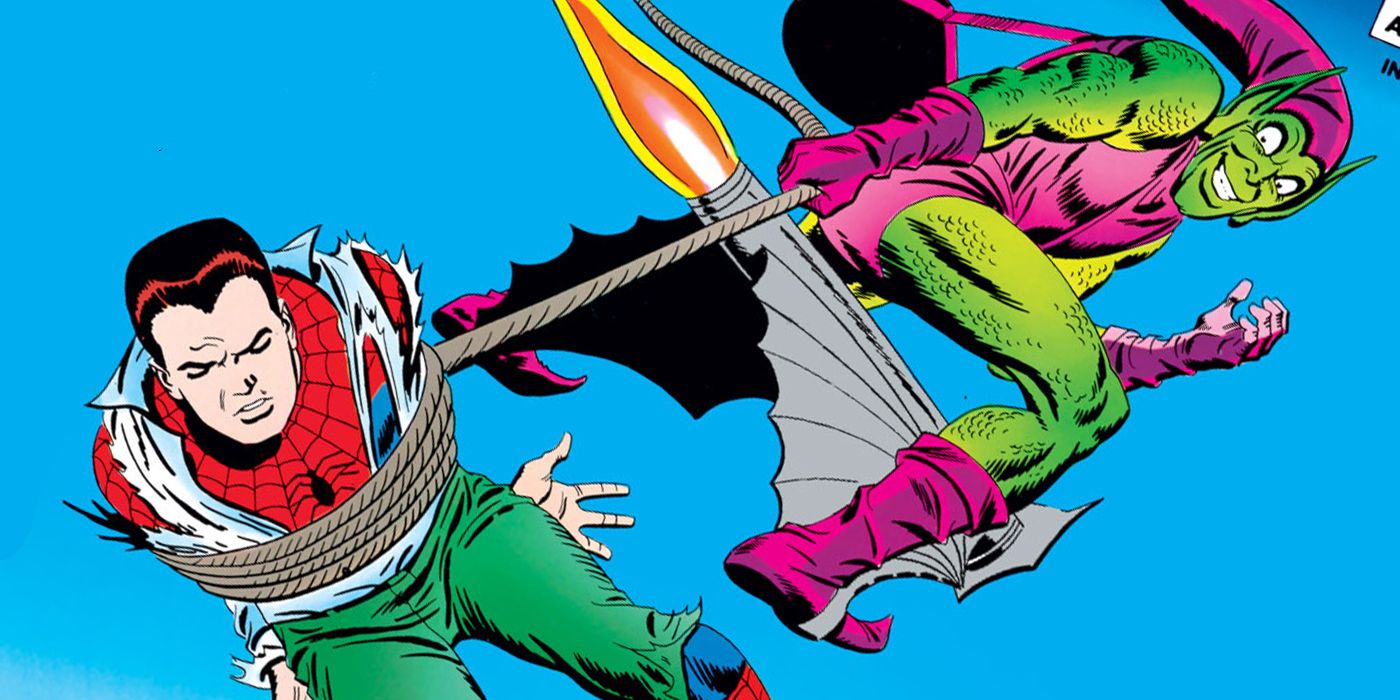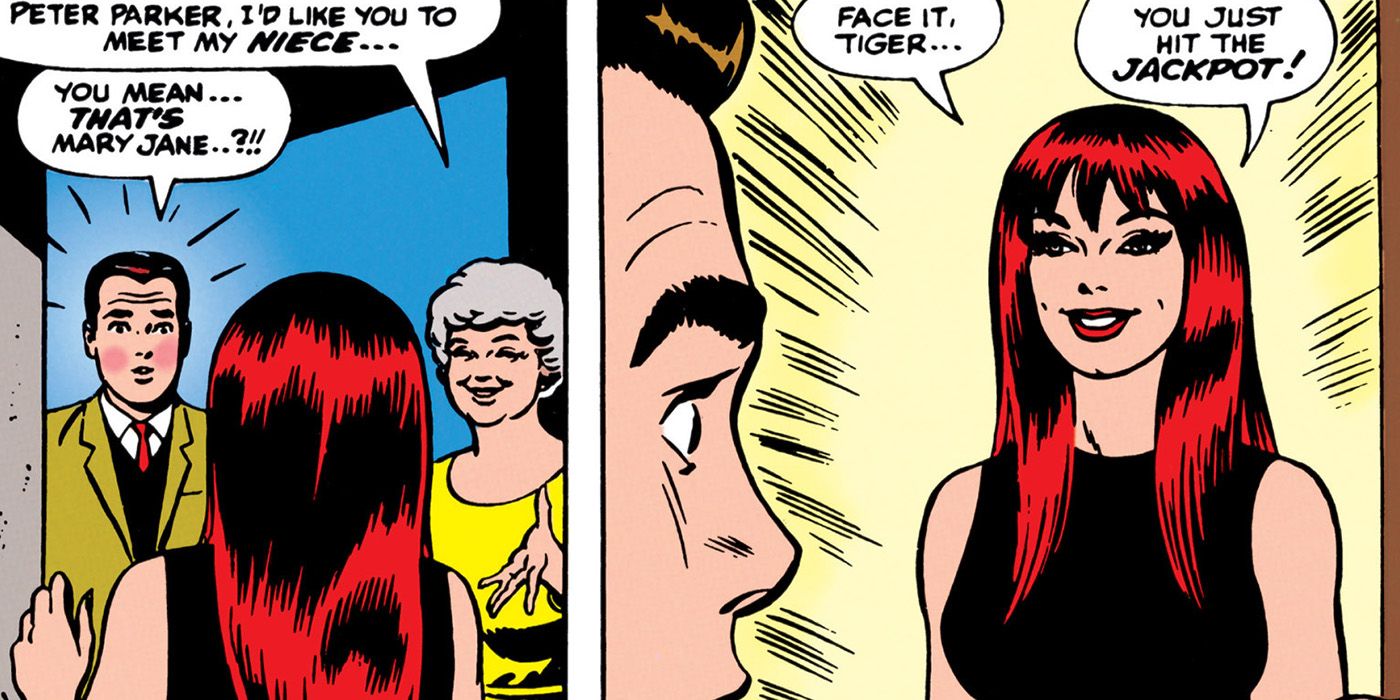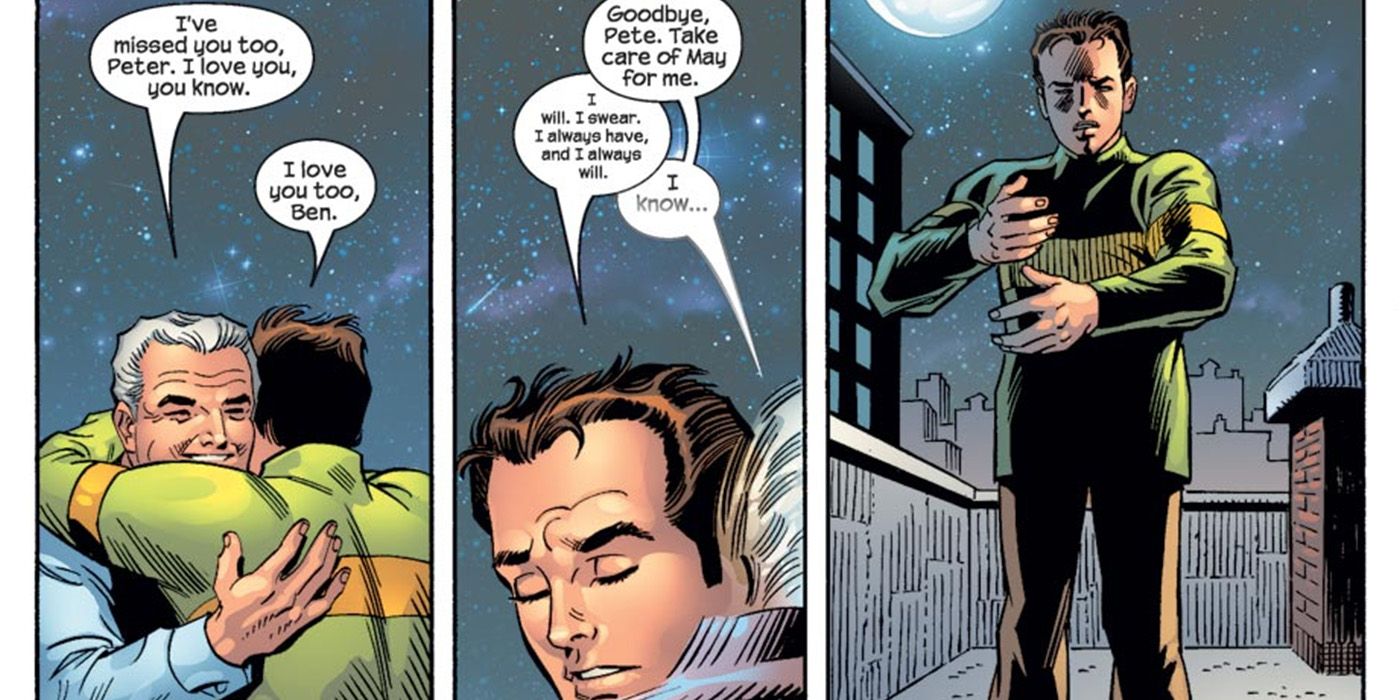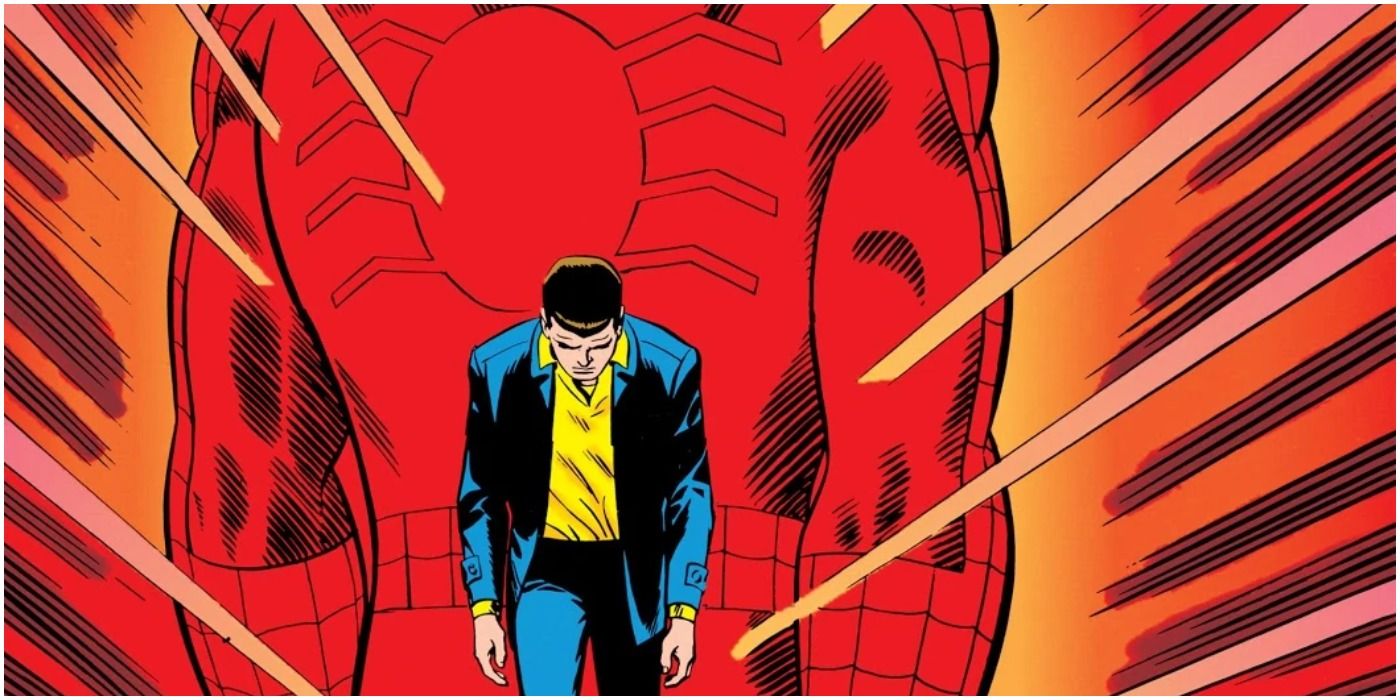John Romita Sr. has been illustrating comic books since 1949. Romita's art style is warm and expressive, making him the perfect artist for DC Comics' early romance titles like Falling in Love and Heart Throbs. Romita would eventually move on to Marvel Comics, working on Daredevil before illustrating the series he's best known for: The Amazing Spider-Man.
John Romita Sr. became the second artist to work on Amazing Spider-Man, following Steve Ditko. Romita's style brought Peter Parker and his social circle to life as Harry Osborn, Mary Jane, and Gwen Stacy became fully fleshed out characters. John Romita illustrated the X-Men, Captain America, and many more, but his work on Spider-Man stood above the rest.
10 Peter Parker Revealed His Secret To His Loved Ones
Amazing Spider-Man #87 featured a stunning cover with the caption: "Unmasked At Last!" Peter stood with his Spider-Man mask in his hand while his friends looked on in shock. In fairness to the cover, Peter did reveal his identity to Harry, MJ, Gwen, and Captain Stacy, but the plot was resolved by the end of the issue.
Regardless, ASM #87 was a fantastic issue in a bubble. Peter believed he'd lost his spider-powers and felt it was time to tell his loved ones the truth. Another cool thing about this issue was the fact John Romita illustrated Hobie Brown, a.k.a. The Prowler, a character conceptualized by his son, John Romita Jr.
9 ASM #59 Delved Into Peter's Social Life
Not all the best Spider-Man comics were the ones with the most action. John Romita and Stan Lee explored Peter's social life in the late 60s and early 70s, as showcased in issue #59. While the issue featured a secret, brainwashing dance club owned and operated by the Kingpin, the bulk of the story focused on Peter and his social circle.
Spider-Man comics in the 60s have been called "Archie comics with superpowers" due to the love triangle between Gwen, MJ, and Peter. ASM #59 features a bit of that drama, with both Gwen and MJ stealing the show.
8 Spider-Man Battled The Illusions Of Mysterio
John Romita's initial run on Amazing Spider-Man ended with issue #58, but the artist would return many times to illustrate random, one-off issues or centennial/anniversary stories. Romita joined Stan Lee once again for ASM #67, showcasing his artistic talents in a visually stunning story featuring Mysterio's incredible illusions.
ASM #67's interior art was mind-bending, portraying Spider-Man's thrilling encounter with Mysterio at a giant carnival and a funhouse of mirrors. However, Romita's cover art, depicting giant Mysterio hands grabbing for a shrunken Spidey, truly made this issue memorable.
7 Spider-Man Teamed Up With Doctor Octopus
While the earliest Lee and Ditko stories were mostly contained within one issue, Romita's Spidey issues saw the beginning of multi-issue arcs that sometimes lasted up to four or five issues. Doctor Octopus returned in issue #53 and battled Spider-Man many times over the following months.
Spider-Man's memory was erased, and he was convinced he was Doc Ock's criminal partner. Issue #56 explored the ramifications of Peter's memory loss. The Daily Bugle had solid evidence Spider-Man was a criminal, while Peter's loved ones feared he'd been kidnapped or killed. Lee and Romita kept the tension high for months, creating a suspenseful and exciting arc.
6 Spectacular Spider-Man's Black & White Format Showcased Romita's Art
In 1968, Spider-Man received his second comic book title, the Spectacular Spider-Man Magazine. The series lasted two issues, but each was longer than the average comic book. The first issue of the magazine was published in black and white with grayscale shading. This format beautifully showcased John Romita Sr.'s art.
DC Comics publishes Batman: Black & White, a series that's meant to highlight pencillers and inkers in the industry. The stunning art for the original Spectacular Spider-Man Magazine makes a strong argument for Marvel to do a similar series for Spidey.
5 Annual '96 Called Back To The Romita-Era Of Spider-Man
The 1996 annual issue of Amazing Spider-Man featured two short stories from classic Spider-Man creators, and each story examined a different part of Spidey's life. The first story was illustrated by Ron Frenz with finishes by John Romita Sr. At this point in time, Ben Reilly was Spider-Man.
Ben Reilly recalled a time in Peter's youth when life was a little simpler. There were no symbiotes or clones, just Peter, his friends, and the Coffee Bean. While the story featured beautiful fight scenes with Kraven, its strengths lay in the quiet conversations between Peter and his closest friends.
4 Romita Joined Amazing Spider-Man With Issues #39-40
The Green Goblin was one of the most popular villains during Lee and Ditko's original run. He appeared in a handful of issues, creating illusions of the Hulk, and challenging the Crime-Master. Throughout all of Ditko's run, the villain's identity was a mystery.
When John Romita joined the series, he and Lee crafted the reveal of the Goblin's identity. "How Green Was My Goblin!" was an incredible story that showcased Romita's art. The characters were vibrant and expressive, and the fight scenes were incredible. The stakes were raised after the Goblin discovered Spider-Man's identity, and the bar was raised even further after Romita joined the book.
3 Mary Jane Debuted In Amazing Spider-Man #42
ASM #42 plays out like an average Spider-Man comic: Spidey is blamed for a crime he didn't commit, the Rhino nearly escapes captivity, and John Jameson (with newly acquired superpowers) challenges Spider-Man to a fight. What's really special about this issue is that it depicts the first full appearance of Mary Jane Watson.
MJ was teased for several issues, always hidden behind flowers or other objects. Finally, Peter and MJ were set up on a date in the final page of the issue. MJ's very first words, "Face it, Tiger, you just hit the jackpot!" in her dramatic entrance, beautifully illustrated by Romita, is one of the most famous panels in comic books.
2 Romita Returned For ASM's 500th Issue
The bulk of Amazing Spider-Man #500 was illustrated by John Romita Jr. Spider-Man traveled to a possible dark future and battled villains of his past in an issue that was very much a love letter to the character. While the issue was action-packed and filled with cameos, the most emotional moments came in the final pages of the book, illustrated by John Romita Sr.
Doctor Strange gifted Peter with one last conversation with Uncle Ben, in which the two shared memories and hugs. Uncle Ben asked if Peter was happy and told him that he was proud. The heartfelt scene could have only been illustrated by Romita.
1 "Spider-Man No More" Remains A Classic
With Aunt May's worsening health, Peter couldn't focus and his grades slipped. He also turned down a date with Gwen Stacy, fearing too many distractions. The last straw came when he turned on the news to hear more anti-Spider-Man rants from Jameson. Enough was enough, and Peter decided to retire from being Spider-Man.
ASM #50 features many iconic images, from Spidey's costume in the trash to the cover image itself. The storyline has been adapted in TV shows and movies like Spider-Man 2 and remains a pivotal part of Spidey's history and character. The issue wouldn't be nearly as memorable without Romita's fantastic art to convey Peter's every emotion.

